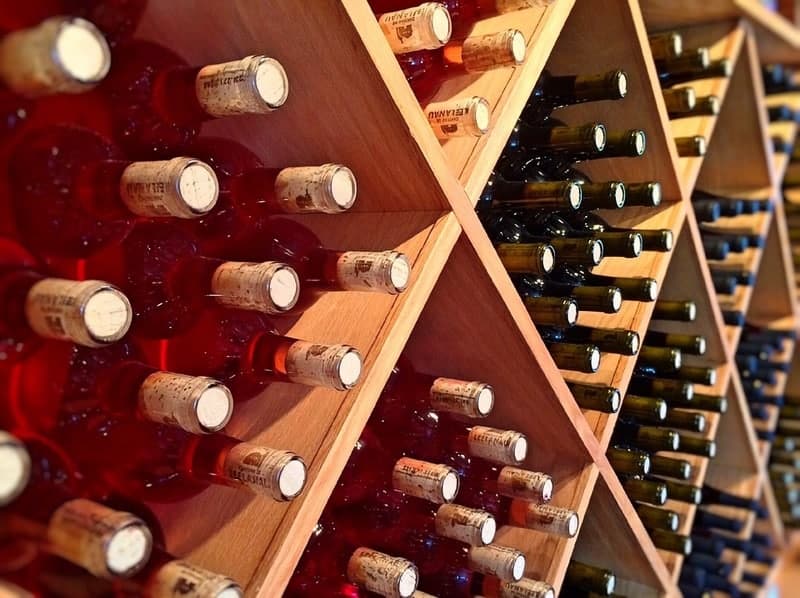Creating a well-balanced wine cellar is both a personal and strategic adventure. It's all about finding the right bottles to suit your tastes, your meals and your future desires. A well thought-out cellar allows you to make the most of every occasion.
Defining the objectives of your wine cellar
Before creating a wine cellar, you need to determine its purpose. Do you want to drink your bottles quickly? Or do you prefer to keep them for several years? Your habits have a direct influence on your selection.
A well-balanced cellar should also reflect your lifestyle. Do you entertain often? Do you prepare a variety of dishes? Do you like to discover new regions? These questions guide your choice of wines to stock.
Evaluate available space and conditions
The environment plays a crucial role. A good cellar requires a constant temperature, around 12°C. Humidity must remain close to 70%. Light must be low and vibration absent.
If you don't have a basement, opt for a refrigerated cabinet. You can also convert a closet into storage space. Even a small space can be used to create an efficient wine cellar.
Varying wine types for a balanced cellar
A well-balanced cellar includes several styles of wine. Here's a basic breakdown:
- 40% red wines
- 25% white wines
- 15% sparkling wines
- 10% sweet or syrupy wines
- 10% rosés
This model adapts to your tastes. If you prefer aromatic whites, increase the proportion. The choice of wines always depends on your desires.

Integrating wines for ageing and wines to drink young
Balance relies on complementarity. Some wines can be drunk quickly. Others benefit from ageing. So include :
- Ready-to-eat wines for everyday meals
- Vintage wines for special occasions
This keeps your cellar alive. Successful wine cellar creation combines immediate pleasure with patience.
Focus on a variety of regions and grape varieties
For a well-balanced cellar, it's essential to diversify your geographical origins. Choose wines from :
- Bordeaux and its great reds
- Burgundy and its elegant Pinot Noir
- Rhône Valley for its Syrah and Grenache varieties
- Alsace for expressive whites
- Loire for its freshness
Add a few bottles of foreign wines to broaden your horizons. The world's wine choices make your cellar richer.
Adapting the cellar to each season
Desires change with the seasons. In summer, we prefer dry whites, rosés and bubbles. In winter, powerful reds and sweet wines are preferred.
A well-balanced wine cellar should follow this natural rhythm. Remember to always have a selection for each period of the year.
Food and wine pairings
Your wine cellar design must also be adapted to your kitchen. Do you like stewed dishes? Keep structured reds. Do you often cook Asian dishes? Choose aromatic whites.
The choice of wines also depends on the occasion: aperitifs, simple dinners, festive meals. A good wine cellar can cater for every occasion.
Organizing your storage space
Good storage makes daily use easier. Classify your bottles by type, region and vintage. Make a note of how long you plan to keep them. Label cases, or use a case-management software program.
A well-balanced wine cellar isn't just about accumulation. It must be clear, organized and easy to consult.
Track the evolution of your cellar over time
An evolving cellar means constant renewal. You have to drink some bottles, buy others, try out new grape varieties. This avoids uniformity.
Write down your impressions after each tasting. This will guide your next purchases and refine your preferences. Wine selection improves with experience.
Set a budget and stay consistent
You don't need a big budget to create a successful wine cellar. What's important is regularity. Buy gradually. Take advantage of wine fairs and advice from wine merchants.
Alternate between lower-priced bottles and more prestigious cuvées. Good value for money remains the main objective. Your well-balanced cellar will gain in quality over the years.
Indulge yourself
A cellar shouldn't be a museum. Open your bottles. Treat yourself. Try out new combinations. Invite friends to share your discoveries.
Creating a wine cellar is a living project. It evolves as you do. Each bottle tells a story. Take the time to listen.
If you enjoyed this article, you might also like to read "Wine festivals around the world: traditions and must-see events"!





